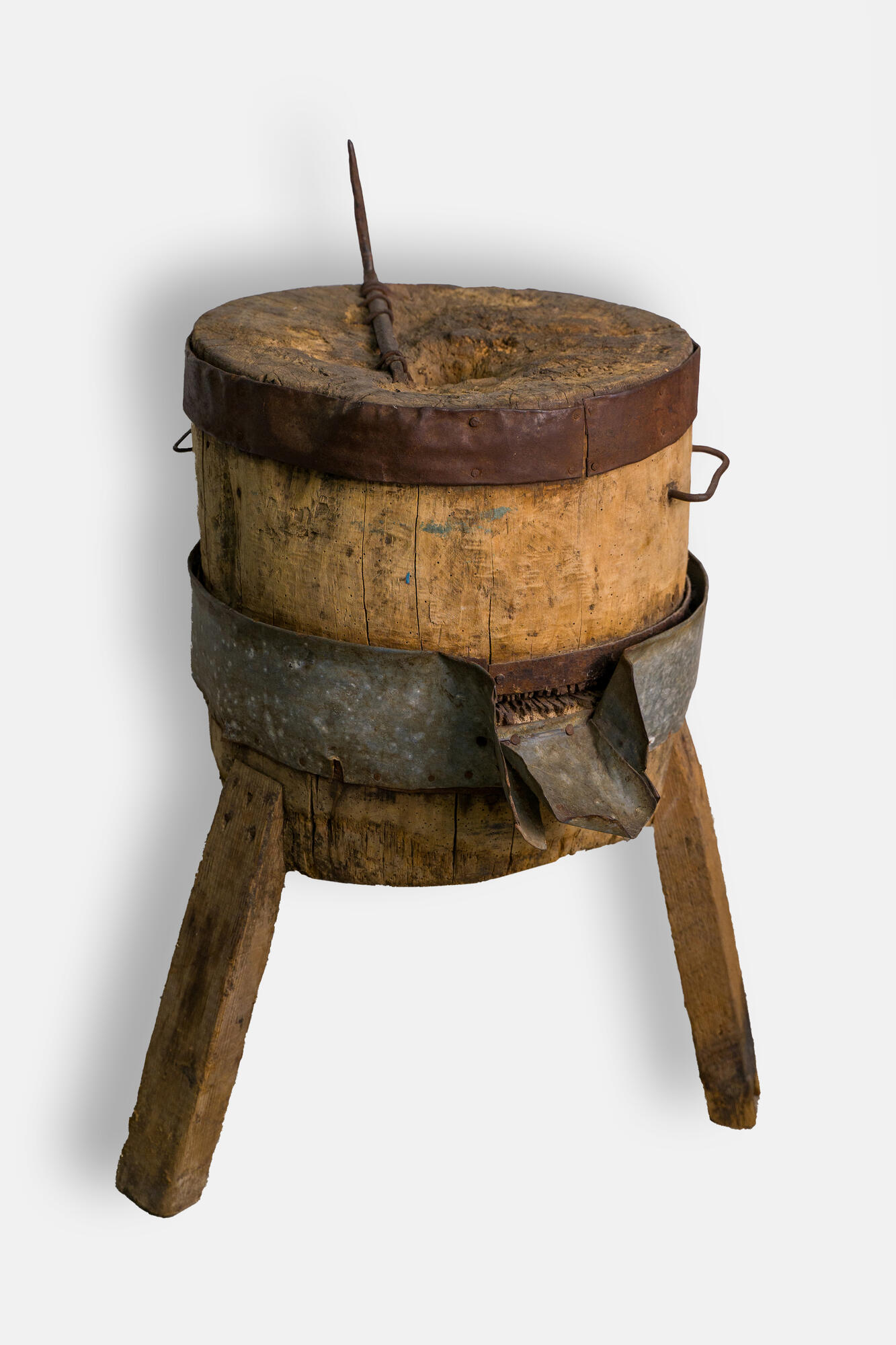The hand mill is one of humankind’s oldest inventions. Its origins date back to the Neolithic period. Throughout many millennia, the design of the hand mill remained virtually the same. Its key elements are two flat round millstones, the working surfaces of which are fitted to face each other.
For processing grain, the Adyghe used several devices. To peel the husk off the grain, it was loaded into wooden mortars, then it was sent to a large mill or ground manually.
The bodies of these hand mills were made of wood, and there were two types of millstones: wooden (for coarse flour) and stone (for finer flour). Traditionally, the diameter of a millstone was about 70 centimeters. The mills were small and convenient enough to be used at home, while at the same time, their design made it possible to grind any kind of cereals and grains without much effort.
The basis of the Adyghe economy was agriculture. The Adyghe cultivated wheat, barley and millet — the latter was prioritized. The cultivation of millet by the Adyghe was described by Giorgio Interiano, a Genovese historian, ethnographer and traveler, and Dorteli d’Ascoli, a monk of the Dominican Order, who was the head of the Order’s mission in Kaffa and Tataria (current-day Crimea) in 1624–1634 and visited Circassia more than once. In his book “Description of the Black Sea and Tatars”, Interiano wrote that Circassians cooked millet in cauldrons and ate it instead of bread.
Millet is mentioned in Adyghe proverbs and superstitions:


